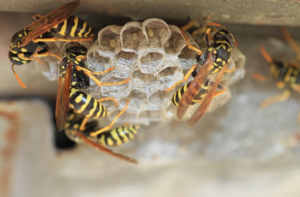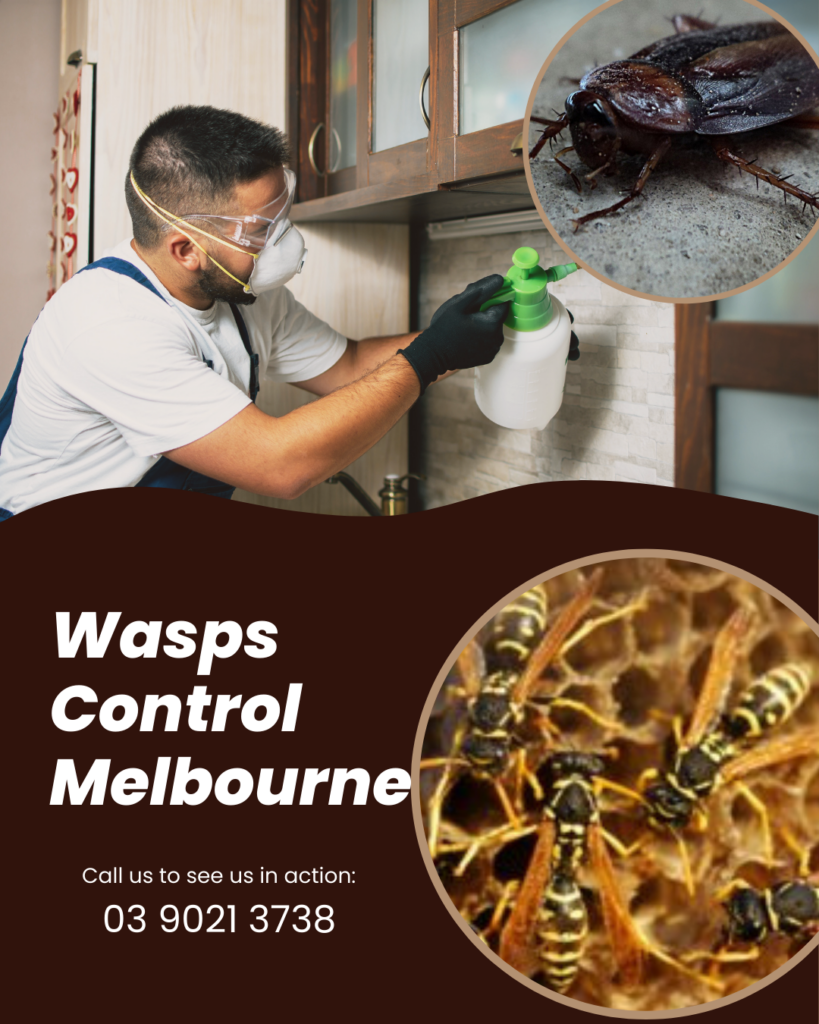When it comes to keeping your home safe and comfortable, dealing with wasp nests is crucial. Wasps can be a nuisance, especially during warmer months. These pests are not only annoying but can also pose a risk of painful stings, particularly for those who may be allergic. Knowing the best time for wasp nest removal is essential to effectively managing these pests and protecting your space. If you notice a wasp nest forming in your yard or near your home, make sure to assess the situation promptly. Before you start searching for videos on wasp removal or calling professionals for the job, make sure to give this blog a thorough read. Today, we will cover various aspects, including how to identify wasp nests, the best times for wasp removal, and safe methods for dealing with these insects. Also, we will discuss the benefits of professional wasp control services and how they can provide peace of mind during the warmer months.
Understanding Wasp Behaviour
Wasps are most active during the spring and summer months. As the weather warms up, they emerge from hibernation to search for food and build nests. During this time, wasps can become aggressive, especially if they feel threatened. Wasp nests can be found in various locations, including trees, eaves, and even inside attics. Understanding their behaviour helps determine the best time to address any infestations. This is why it’s always best to call upon wasp removal experts for the job as they know the species and their nature.

The Ideal Time for Removal
Early Spring
Early spring is one of the best times for wasp nest removal in Melbourne. This is when wasps are just starting to build their nests. If you spot a nest at this stage, it’s relatively small and easier to remove. Addressing the issue early can prevent the nest from growing larger and more complex.
Removing nests in early spring also reduces the chances of getting stung. Wasps are less aggressive during this time, as they are still establishing their colonies. It’s a good time to survey your property and eliminate any nests before they become a significant problem.
Late Summer
Late summer is another significant period for wasp nest removal. By this time, wasp colonies have reached their peak size, and nests can be quite large. Removing nests during late summer is essential, as wasps can become more aggressive in defending their territory. While it may be riskier to remove nests at this time, it’s still necessary. If left unchecked, wasps can cause big problems as they search for food, which often leads them into homes.
When Not to Remove Nests
During the Day
Wasps are most active during the day, especially in the morning and early afternoon. Attempting to remove a nest during these hours can increase your chances of getting stung. It’s better to plan your removal efforts in the evening or at dusk when wasps are less active and more likely to be inside their nests.
In the Fall and Winter
Fall and winter are not ideal times for wasp nest removal or control. As temperatures drop, wasps become less active and prepare to die off. Most wasps will leave the nest to hibernate or perish, leaving only the queen alive. If you have a nest in late fall, it’s often best to wait until spring to remove it. The risk of getting stung is lower, and the nest is likely to be abandoned.
How to Remove Wasp Nests Safely?
Call a Professional
If you have a large wasp nest or are unsure how to remove it safely, consider calling a pest control professional. They have the experience and tools necessary to remove nests effectively. This can save you time and reduce the risk of stings.
DIY Removal
If you choose to remove a nest yourself, take precautions. Here are some tips for safe DIY removal:
● Wear Protective Clothing: Dress in long sleeves, pants, gloves, and a mask to protect your skin and face.
● Use the Right Equipment: A wasp spray designed for long-range application is ideal. This allows you to spray the nest from a safe distance.
● Spray at Night: As mentioned earlier, wasps are less active at night. Approach the nest slowly and spray it directly.
● Monitor the Nest: After spraying, watch the nest for activity. If wasps are still present, you may need to call a professional for assistance.
Preventing Future Nests
Once you’ve dealt with an existing nest, it’s crucial to take steps to prevent new nests from forming.
Seal Entry Points: Inspect your home for cracks and gaps. Seal any openings to prevent wasps from entering.
Keep Food Covered: Wasps are attracted to food. Ensure that outdoor food is covered and remove any spills promptly.
Use Wasp Traps: Set up traps around your property to catch any wasps before they can establish nests.
Regular Inspections: Check your property regularly, especially in spring and summer. Early detection can help you address potential nests before they grow.
Wasp Removal and Control
Effective wasp removal and control involve understanding wasp behavior and implementing strategies to deter their presence. Hiring professionals for wasp control can ensure that nests are eliminated safely and efficiently. Pest control experts have specialised equipment and experience to handle even the most challenging infestations. On top of all, ongoing wasp control measures, such as sealing entry points and eliminating food sources, can help prevent future nests from forming. Maintaining a proactive approach is key to managing wasps and protecting your home from these pests.
Understanding the best time for wasp nest removal is essential for keeping your home safe. Early spring is the optimal time for removal, while late summer poses its challenges due to increased wasp activity.
Whether you decide to tackle the removal yourself or call a wasp removal professional, always prioritise safety. By taking preventive measures, you can reduce the chances of wasps nesting on your property in the future. If you are looking to remove wasp nests or control wasps from your property, call Wasps Control Melbourne at 03 9021 3738 today.




